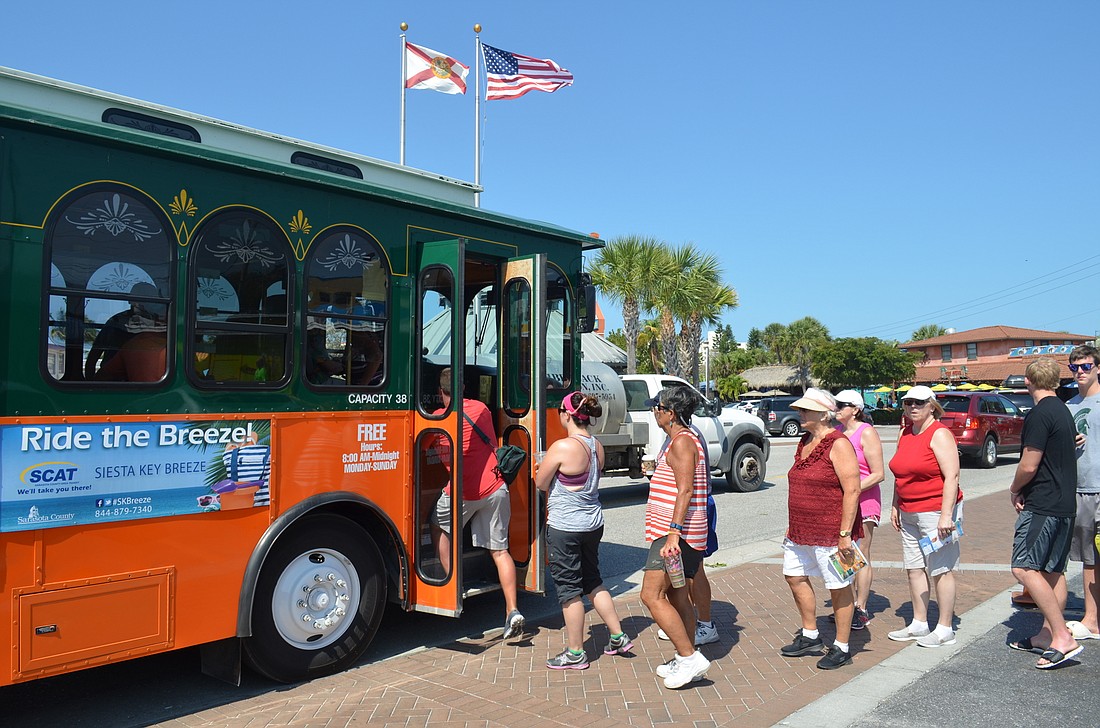- May 4, 2024
-
-
Loading

Loading

Early next year, Sarasota residents and visitors may be able to travel from downtown Sarasota to south Lido Key on a free, open-air trolley.
On Monday, the City Commission voted 4-1 to approve a three-year, $4.4 million contract for the new route, called the Bay Runner. Washington, D.C.-based CPR Medical Transportation — which runs the Siesta Key Breeze trolley — will manage the city’s service. The project is funded in part by a three-year, $1.59 million grant from the Florida Department of Transportation, with the bulk of the remaining money coming from the city’s economic development fund.
The trolley will run seven days a week from 8 a.m. to midnight, though the city has the ability to work with the vendor to alter the scope of service as needed. The city has identified 13 stops for the trolley, with endpoints at Main Street and School Avenue downtown and Ted Sperling Park at South Lido Beach on the barrier islands.
Although a start date has not been finalized, the city said it hopes the service will be in operation for most of the upcoming peak tourist season.
A majority of the City Commission expressed enthusiasm about the trolley as an opportunity to promote alternative modes of transportation on a busy corridor that links two of Sarasota’s largest commercial districts.
“Giving our community and our visitors different options to get around, I think, is important,” Mayor Hagen Brody said. “It will inherently affect, in a positive way, our traffic and our congestion.”
Despite the positive reaction from officials, the commission’s discussion did raise some questions about plans for the trolley service. Commissioner Jen Ahearn-Koch, the vote against the contract, expressed skepticism about the city’s ability to evaluate whether the trolley was having a positive impact on businesses downtown and at St. Armands Circle.
“Where do we start with this?” Ahearn-Koch said. “Do we have any information? Do we have any data? What is our measure of success?“
Parking Manager Mark Lyons said the city would monitor ridership data, but he said there were no established benchmarks at the outset of launching the trolley.
Ahearn-Koch said she was concerned about the cost of the service given the city was not certain about the impact the Bay Runner will have, and she suggested the city could have opted for a more modest pilot service that could have been paid for with the FDOT grant.
Both Ahearn-Koch and Commissioner Erik Arroyo noted the trolley was projected to receive more than 80% of the money the city’s economic development fund generates annually, and if the city wanted to extend the program after the FDOT grant expires, officials would need to identify more funding options.
Several commissioners expressed hope the city could reduce the cost of the trolley as more information became available about the demand for service. Arroyo suggested the city could concentrate on running the trolley between Thursday and Sunday, while Brody suggested some stops by the beach could be eliminated after sundown.
“I think that the data will guide us and should guide us,” Brody said. “We’re starting with a very wide net, as far as ridership goes, and I think the ridership will tell us what schedule makes sense financially.”
Commissioners Liz Alpert and Kyle Battie said they understood why some might balk at the price associated with the trolley, but they saw it as a worthwhile investment in a service that would benefit the community.
“The cost is what it is,” Battie said. “You’ve got to pay to play.”